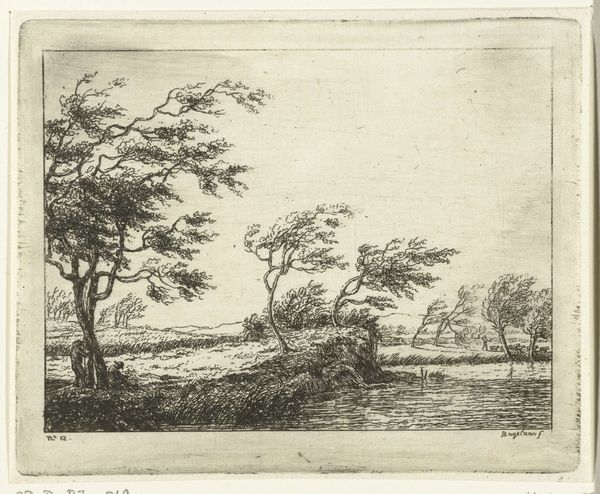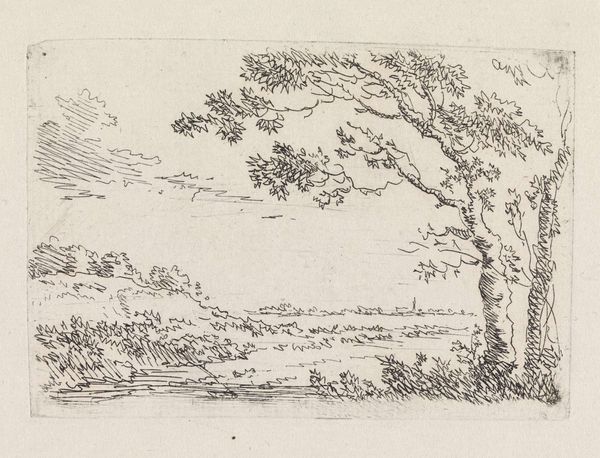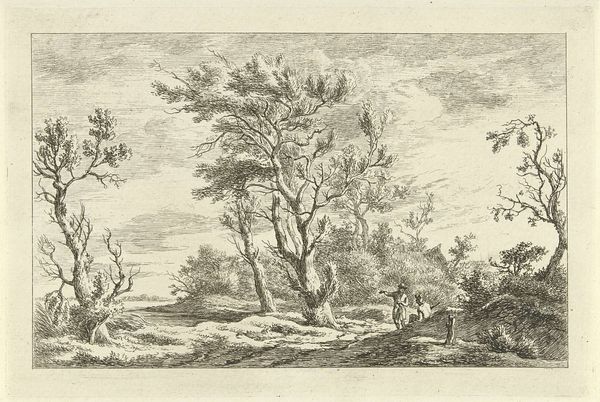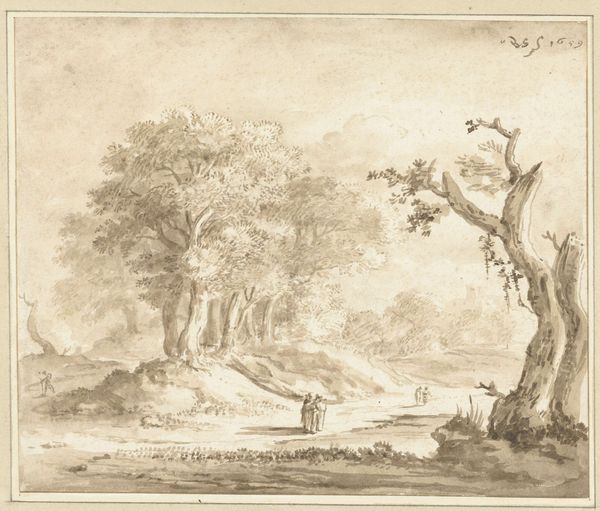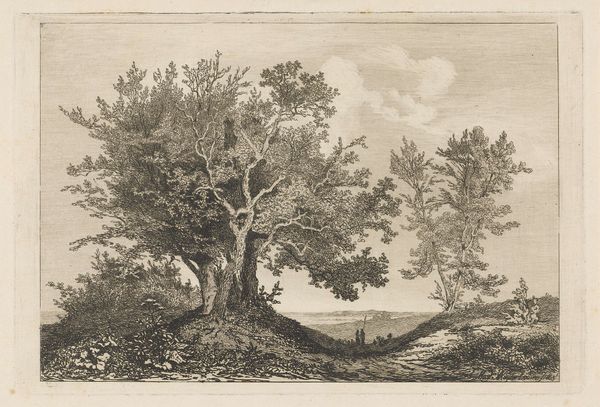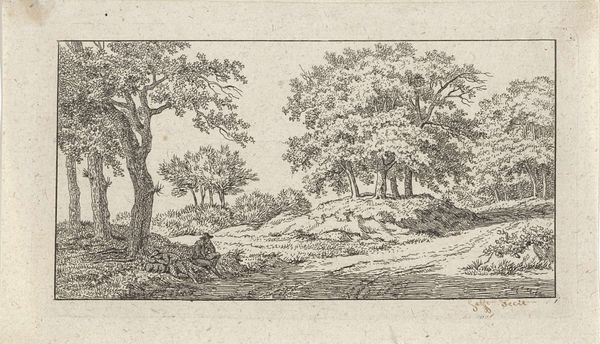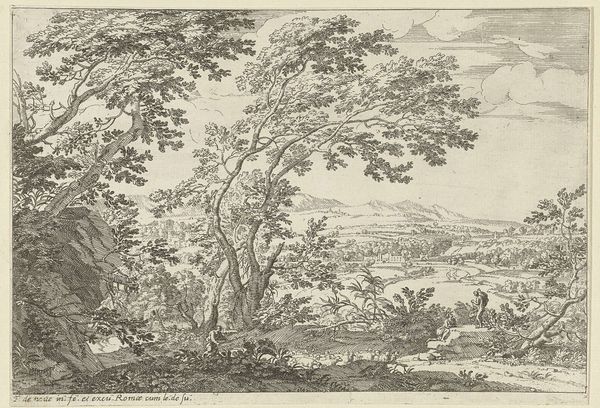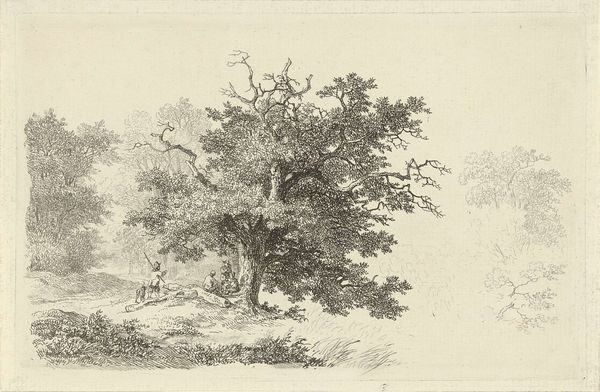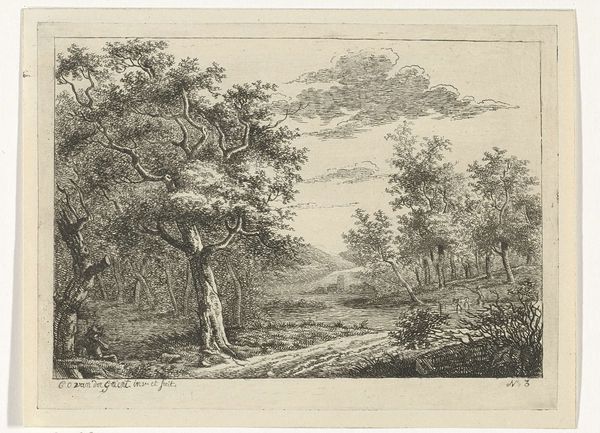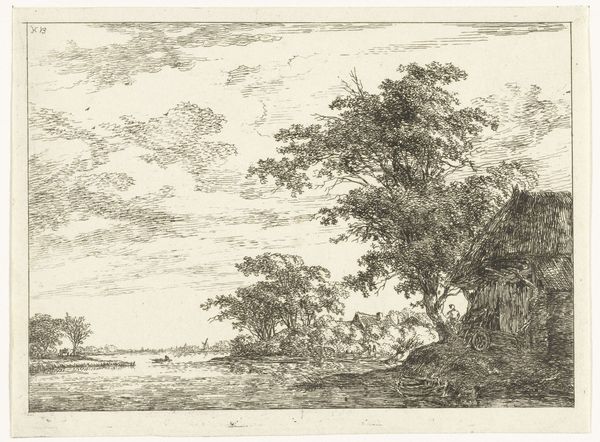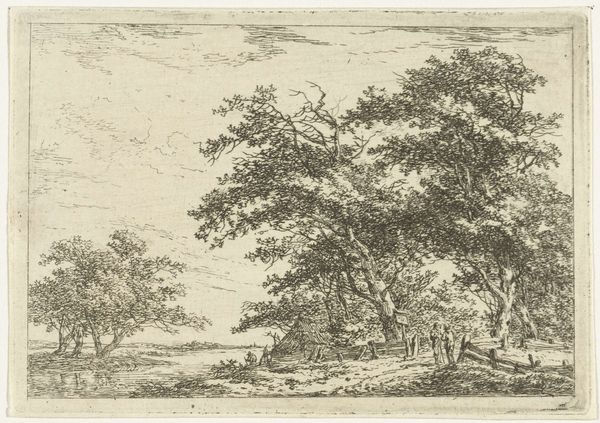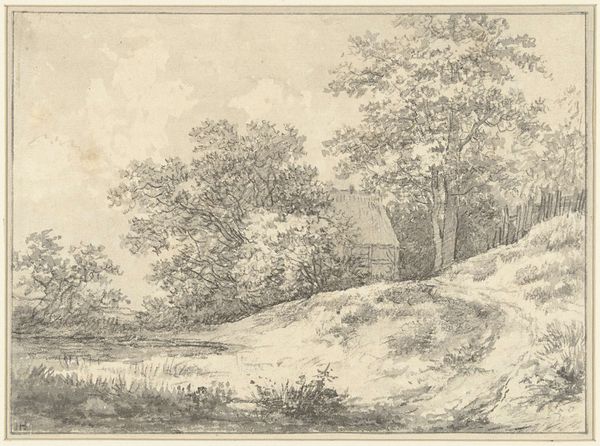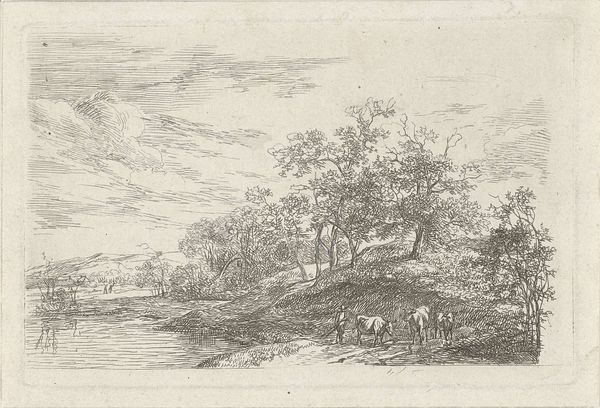
drawing, print, etching, ink, pencil
#
drawing
#
neoclacissism
# print
#
pen sketch
#
etching
#
landscape
#
ink
#
ink drawing experimentation
#
pen-ink sketch
#
pencil
#
pen work
#
sketchbook drawing
#
realism
Dimensions: height 135 mm, width 201 mm
Copyright: Rijks Museum: Open Domain
Editor: We are looking at "Landscape with Cows by the Water" from 1790, made by Gerard van Nijmegen. It’s a delicate etching on paper, giving the scene a gentle, almost nostalgic feel. The lines are so fine. How should we approach such an idyllic image from a historical perspective? Curator: It's interesting to consider this 'idyll' within its socio-political context. The late 18th century witnessed increasing urbanization and social unrest, even in the Netherlands. These images served as a powerful counterpoint, an imagined, perhaps longed-for, return to an idealized, simpler past. Note how nature is carefully arranged, a testament to emerging notions of picturesque aesthetics influenced by Neoclassicism. Editor: So, this seemingly simple landscape is actually reflecting deeper social currents? It’s like a visual escape. Does the medium itself - the print – play a role in this? Curator: Absolutely. Prints made art accessible. Unlike unique paintings, prints allowed these idyllic scenes to circulate widely. Think of it as an early form of mass media shaping ideas about the relationship between people, land, and national identity. Consider, for instance, who might have been purchasing and displaying such imagery. What class or social group? And what values might such imagery reinforce, consciously or unconsciously? Editor: That makes me consider how the "escape" it offers might only be available to some, reinforcing existing social structures by presenting an ideal that many couldn't access. I hadn't considered it that way initially. Curator: Exactly! The image appears natural, almost untouched, but it’s meticulously constructed. Remember, art never exists in a vacuum. Understanding the forces that shaped its creation and reception enriches our understanding. Editor: This gives me so much to think about. Thank you, I appreciate you expanding my perspective on the intersection of social forces and aesthetics in what initially looked like a simple landscape drawing. Curator: It's always rewarding to see how the lens of history can reveal hidden layers within an artwork. Keep questioning the context.
Comments
No comments
Be the first to comment and join the conversation on the ultimate creative platform.
